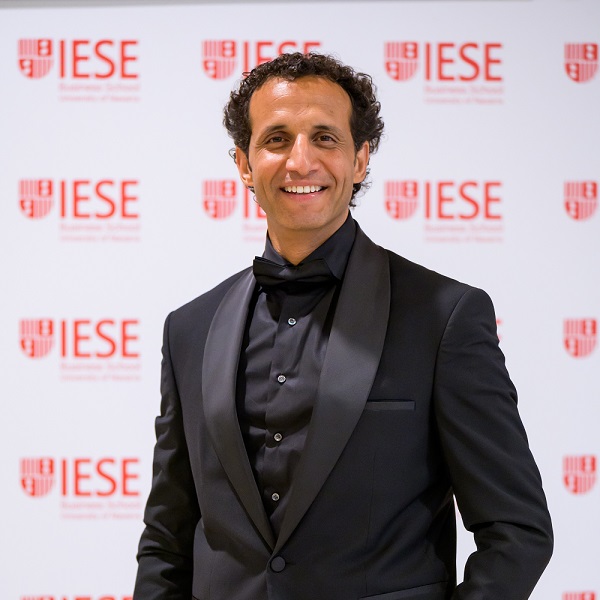
Mo Mabrouk is the Founder and CEO of Pencilight, a decorative lighting brand based in Egypt, and Pencils Advertising, a marketing agency in Abu Dhabi. After 15 years working abroad in design and advertising, he returned to Egypt in 2020 to start Pencilight, growing it into a globally recognised brand. A 2025 graduate of the IESE Global Executive MBA, Mo combines creativity and entrepreneurship with a passion for building ethical businesses, scaling Egyptian design to international markets and building Egyptian IKEA.
You have gained several degrees in various fields of study and on different continents. How do you know when it’s time to go back to school?
I felt I had reached a ceiling. Pencilight was growing fast, but I knew we needed more structure to scale internationally. I had the creative and operational side figured out, but I lacked the frameworks for strategy, finance, and global leadership. The pandemic also pushed me to rethink my role as a founder. I wanted to step back from being only a doer and become a leader who empowers others. That was my trigger to go back to school.
 What was your career trajectory before and after your MBA?
What was your career trajectory before and after your MBA?
Before the GEMBA, I was running two businesses mainly on intuition and hands-on management. I built Pencilight from scratch, moving back to Egypt after 15 years abroad, and we managed to break even in four years. Following the GEMBA, I have a clear international roadmap, structured governance, and a leadership team that can operate without me in the day-to-day. Personally, I shifted from founder-led chaos to building systems and culture that can scale.
How did you choose your GEMBA study destination and business school?
I chose IESE for my GEMBA because I wanted a truly global programme with diverse classmates and campuses in different countries, something that would expose me to different cultures and business environments.
The turning point came when I attended the Access MBA/Premier EMBA event in Milan. I originally went just to explore options without planning to apply, but the event allowed me to meet representatives from many schools in one place and compare them directly. My conversation with the IESE representative was very intensive and left a strong impression on me. Within four weeks, I applied to IESE, completed three interviews over three weeks, and decided to join. That single event played a huge role in my final decision.
You mentioned rediscovering yourself as a leader and a human. What specific experiences or moments triggered that transformation?
Two things: the leadership modules and the peer feedback. The programme forces you to reflect deeply on your behaviour, your blind spots, and even your personal life. During one module, I realised I had been leading from urgency and firefighting, not from inspiration. Hearing honest feedback from classmates — who became like family — helped me realign my leadership style and priorities.
What strategies helped you manage the intense demands of the programme while running two businesses?
I delegated more than ever before. I built a leadership team and trusted them to make decisions without me. I also learned to prioritise ruthlessly — some things had to wait, and that was OK. Lastly, I integrated what I learned directly into my businesses in real time, so the MBA wasn’t separate from work; it became part of it.
Did the global exposure during the IESE GEMBA shift how you think about strategy, culture, or scaling a business?
Completely. Being in classrooms in New York, Singapore, Barcelona, and the UK showed me how context changes everything, from operation to supply chains to leadership styles. It made me more adaptable and more aware of cultural nuances. Now, as we scale Pencilight to the GCC and Europe, I design strategies that are globally inspired, but locally relevant.
What would you do differently if you could start the journey over again?
I would involve my team earlier. Initially, I kept my MBA separate, but when I started sharing insights with them, it accelerated our growth. Also, I’d keep a better journal: you process so much during GEMBA, and writing it down helps connect the dots long-term.



